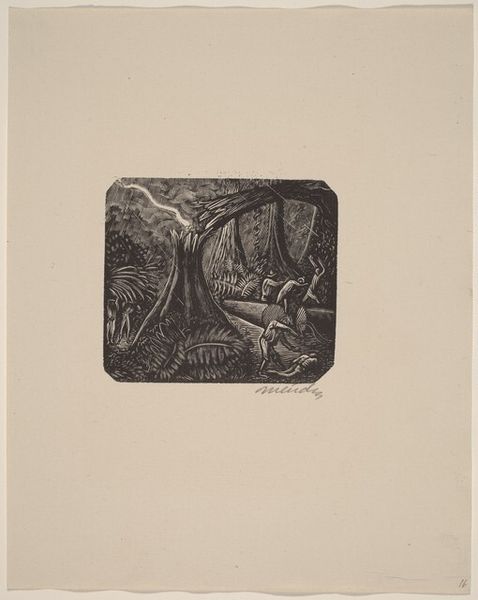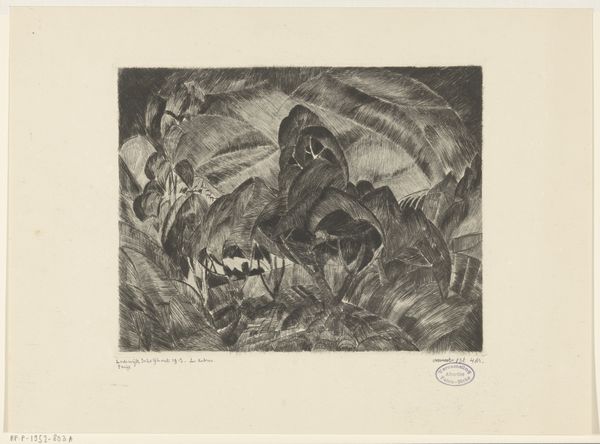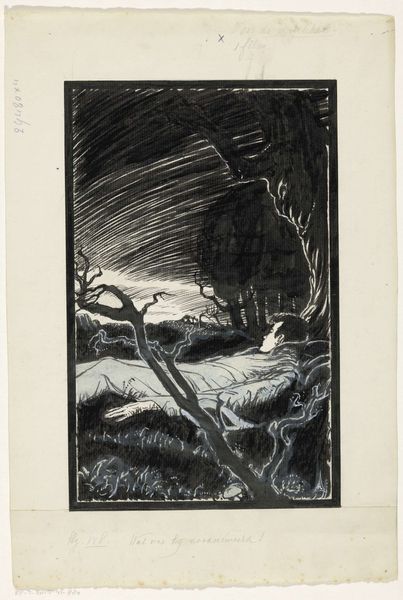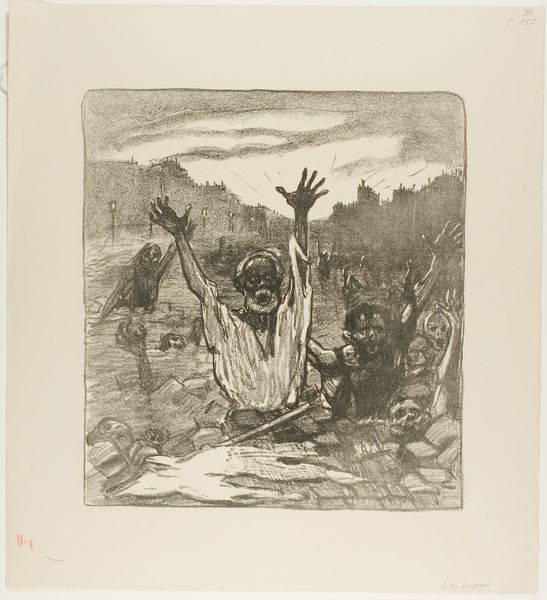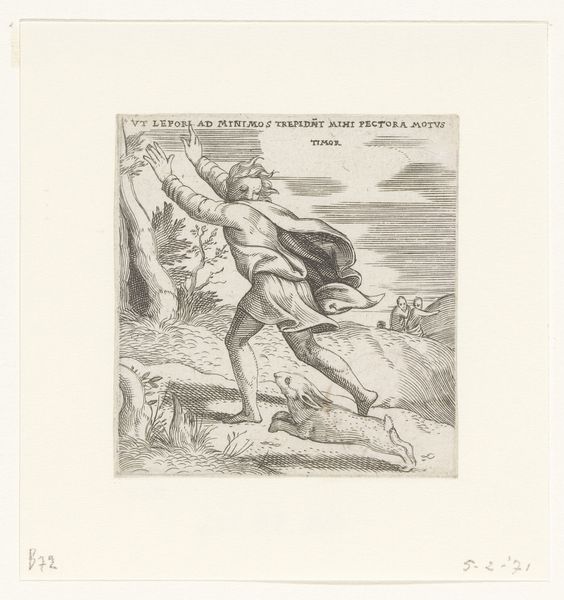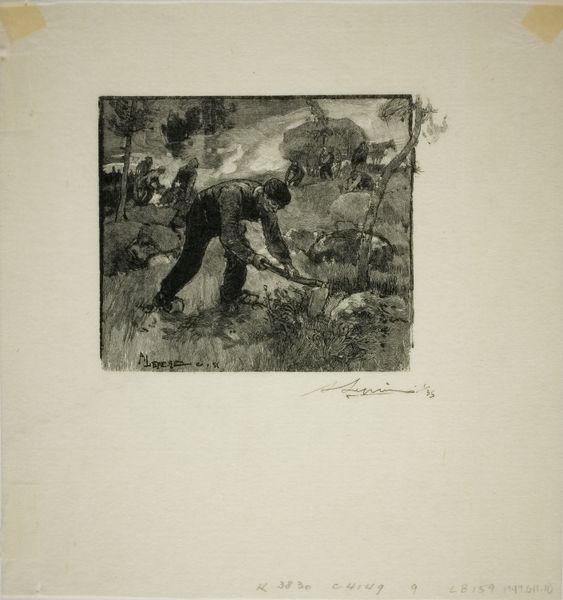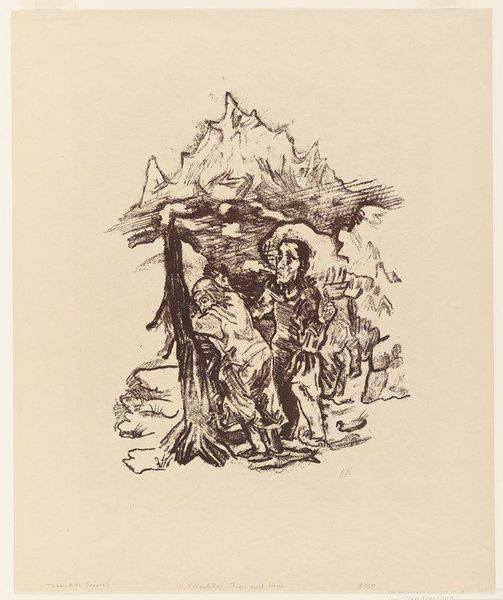
#
narrative-art
# print
#
figuration
#
mexican-muralism
#
history-painting
Copyright: National Gallery of Art: CC0 1.0
Editor: So, here we have Leopoldo Méndez's "Fascism II" from 1943. It's a stark print and feels overwhelmingly bleak. What catches my eye is how the textures created by the printmaking process almost amplify the violence of the scene. What do you see in this work? Curator: I notice first the blatant representation of power dynamics embedded within the image's production and context. Consider the tools used to create this print – the gouges, the deliberate carving away of material. These are physical acts, mimicking, in a way, the violent suppression depicted. What is being consumed to disseminate such images of resistance? Paper? Ink? Resources that could be put to other uses. Editor: That's fascinating. So you're suggesting that even the medium itself is implicated in a larger political and economic system? Curator: Precisely! Méndez isn't just showing us fascism, he is implicating us within the systems required to challenge and depict it. The labor required to produce such work and who it benefits most... that's a question we should continue asking ourselves, don't you agree? The woodblock holds, it repeats… Who owned that press, that wood? How did the materials shape the work? Editor: Absolutely, considering the means of production really opens up another layer of interpretation. Curator: What new appreciation do you have after considering it? Editor: I now appreciate how the image isn't just about what it depicts, but about the larger networks of labor, materials, and power it exists within. Curator: A critical lens helps to recognize these things, to deconstruct dominant ideologies, and expose underlying economic structures.
Comments
No comments
Be the first to comment and join the conversation on the ultimate creative platform.

